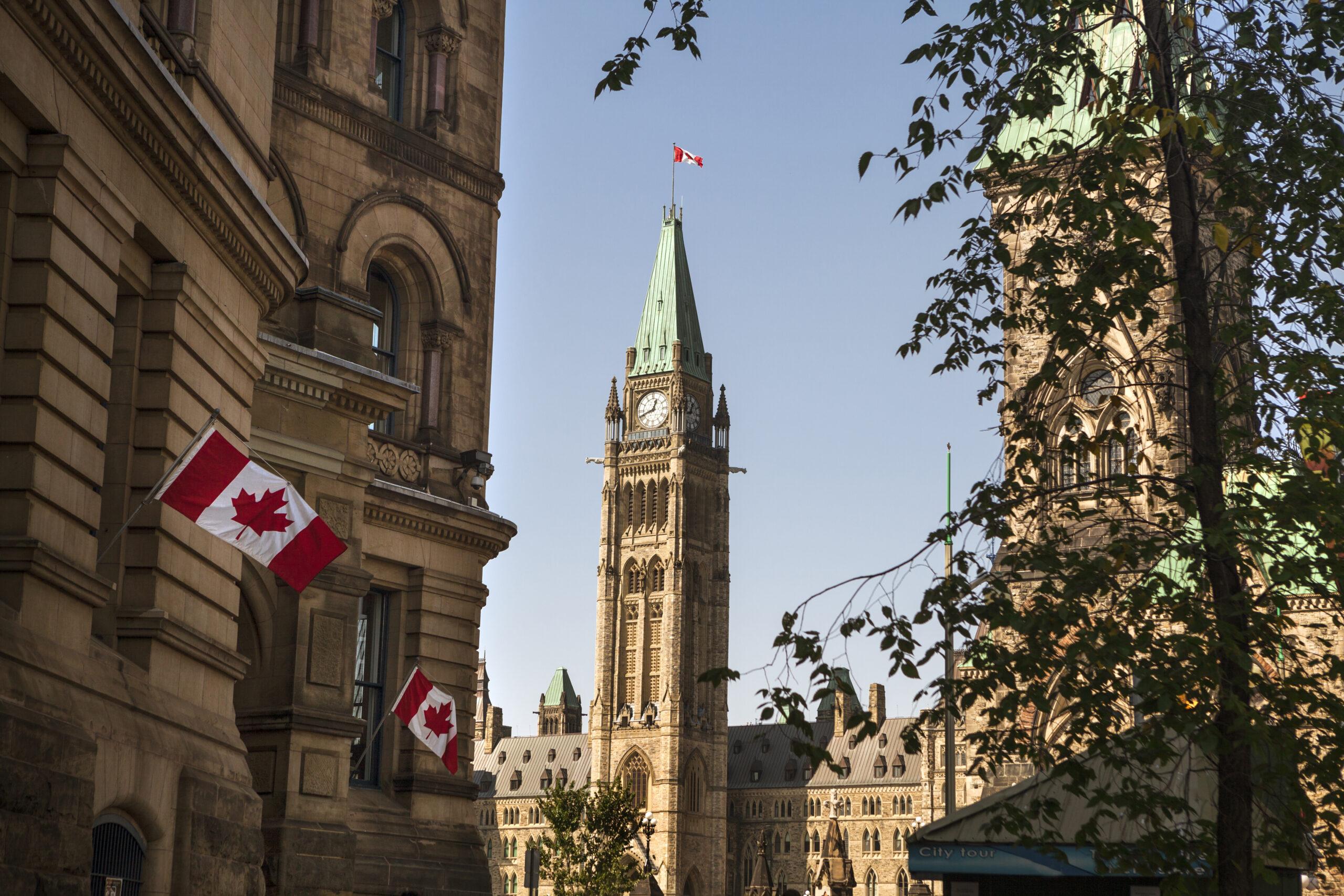


The Trans-Pacific Partnership (TPP): Implications for Canadian IP Law
The Trans-Pacific Partnership (TPP): Implications for Canadian IP Law
On February 4, 2016, Canada signed the Trans-Pacific Partnership (TPP) after 19 rounds of formal negotiations spanning the course of seven years. While the TPP has been heralded as a great economic step forward for Canada, it has also been met with considerable controversy, particularly in relation to the TPP’s intellectual property (IP) provisions.The TPP is a free trade agreement with global significance – it has been estimated that the deal will affect a market of almost 800 million people, with an aggregate GDP of $28.1 trillion dollars. This amounts to approximately 40% of the global economy.1 With the aim of increasing free trade in the Asia-Pacific region, the TPP will reduce barriers to trade, and harmonize rules in such areas as investment, intellectual property, and labour. The twelve countries that have signed the TPP include Canada, the United States of America, Mexico, Chile, Peru, Australia, New Zealand, Japan, Singapore, Malaysia, Viet Nam and Brunei Darussalam. A broader overview of the TPP is available in our October 2015 Bulletin “TPP of the Iceberg”.
The ink has barely dried on the TPP, and many are left pondering what impact this Agreement will have on Canadian intellectual property laws. Some have argued that the TPP will negatively impact Canada, yet given the importance of trade in the Asia-Pacific region, harmonized intellectual property protection – particularly when it comes to countries with less developed IP regimes – may benefit Canadian businesses with IP assets that are looking to do business in this region. However, when senior executives such as Jim Balsillie and Ford Canada CEO Dianne Craig express serious reservations about provisions of the TPP and their impact on Canadian business and innovation, a closer look at the provisions is called for. Despite the controversy, an examination of the TPP’s provisions demonstrate that in actuality the TPP does not differ widely from Canada’s current IP regime, nor other international agreements that Canada has already implemented or is in the process of implementing. Over the last twenty years or more there has been significant convergence of national IP laws to an international norm, and the TPP is another step in this process. This bulletin provides an overview of some of the notable changes that the TPP will bring, and how its IP provisions fit within the Canadian legal framework.
Intellectual Property in the TPP
Intellectual property falls under Chapter 18 of the TPP, with provisions covering trademarks, geographic indicators, patents, copyright, enforcement, and, in light of the digital age, specific carve outs for the liability of Internet service providers.
The TPP will harmonize intellectual property laws amongst parties with the stated intention to “(a) promote innovation and creativity, (b) facilitate the diffusion of information, knowledge, technology, culture and the arts; and (c) foster competition and open and efficient markets.”2 Overall the TPP intellectual property provisions emphasize cooperation, coordination, training and the exchange of information between parties. Ratifying parties will, at the very minimum, be required to meet the standards set out in these provisions, however there are no restrictions on how parties may implement them.
(a) Trademarks
Generally the TPP provisions on trademarks are in line with Canada’s current regime. For example, the TPP requires at least 10 years of protection for registered trademarks, and Canada already affords registered trademark holders 15 years (although this will be amended to 10 years when the amendments to the Canadian Trade-marks Act3 come into force). In fact these amendments to the Trade-marks Act will bring the Act in line with other international intellectual property agreements that Canada is a party to, including the Madrid Protocol and the Singapore Treaty on the Law of Trademarks. The TPP is in line with these agreements, and requires that parties sign on to them, thus if the TPP is ratified it will not result in a major overhaul of Canadian trademark law.
One area of change, however, relates to cross-border protection measures. Specifically, Article 18.76 of the TPP requires that parties have systems in place to detain not only suspected counterfeit goods but goods bearing confusingly similar trademarks, upon application by a rights holder. The current Canadian regime, as set out in the new Combating Counterfeit Products Act (CCPA),4 provides that rights holders can register applications with the Canada Border Services Agency who will then alert said rights holders if they discover suspected counterfeit goods. Broadening this to include goods bearing confusingly similar trademarks increases the complexity for border control agents, who will then need to make more difficult and nuanced determinations on goods crossing the border. While this may pose challenges to administration of the process in Canada it will be interesting to see what impact the enforcement of these provisions will have on international trade. A very strict test for what imported goods are “confusingly similar” to domestic goods could in practice function as a non-tariff barrier to imports.
(b) Geographic Indicators and Collective Marks
Under the Canadian Trade-marks Act, Canada already provides protection to geographic indications for wine and spirits. Geographic indications are marks that identify product as coming from a specific territory or region. The Comprehensive Economic and Trade Agreement (CETA) between Canada and the European Union, which Canada has signed but not yet implemented, will commit Canada to instituting broader protection that includes agricultural and food geographic indications from EU nations. The TPP provisions provide that parties promote fair systems for the protection of geographical indications, and this will likely lead to Canada recognizing additional indications for those goods coming from TPP parties. The international trend to give greater protection to geographic indicators is clear, and perhaps it is time for Canadian food producers to shift their focus to securing such protection for iconic Canadian products like Québec and Ontario maple syrup.
The TPP will also introduce protections for collective marks, which Canada does not currently offer. Collective marks are trademarks owned by a collective organization or group that members may use to identify themselves or their goods or services as being from that group.
(c) Patents
One of the more controversial areas of the TPP has been in relation to patents, specifically for pharmaceuticals, over concerns that this will hinder access to medicine particularly in poorer signatory states. For example, the provisions on biologics – which are medical therapies derived from living organisms (for example insulin, blood products, and gene therapy) – have been highly controversial in regards to access to medicine because they tend to be very expensive. The TPP provisions set a market exclusivity period of 8 years for these products. Some countries such as Australia don’t currently offer market exclusivity for biologics or if they do it is for a shorter term. While this provision may be controversial for those countries, this 8-year term of market protection is what Canada already offers to patent holders of biologics. The TPP also has a carve out provision for public health concerns – Article 18.6 specifically highlights that the obligations of the TPP do not prevent a party from taking measures to protect public health, and to promote access to medicines.
One notable change in the realm of patents is that if the applicable government agencies cause unreasonable delays in the issuance of a patent, then the patent owner can request that the term of the patent be extended to compensate for that delay. An unreasonable delay is defined as being issuance more than five years after the application has been filed, or three years following the date that a request for examination of the application has been made.
(d) Copyright
The TPP extends the term of copyright protection to life of the author plus 70 years (or if there is no author, 70 years from the date of publication or creation). This is a considerable change for Canadian copyright law, which currently extends the term of protection to 50 years past the end of the year of death of the author. This will bring parties on par with the United States and European copyright regimes, which have set the life plus 70 years standard. This change may cost Canada a considerable amount of money as it keeps works from the public domain for an additional 20 years. It will however be beneficial to copyright owners that will receive two more decades of financial benefit. The biggest practical impact is likely to be on the administration of estates in which copyright is a significant asset. Even the current term of copyright lasts longer than the lives of the first group of executors appointed in the will; the extra 20 years will likely require another generation of executors over the life of the estate. Given that most authors and artists tend to be of modest means, they rarely have the benefit of specialized legal assistance in managing their copyright while they are alive, or to properly plan for its administration following their death.
However, it is also important to note that greater cooperation amongst TPP parties means that Canadians will have an easier time managing and enforcing their copyright holdings abroad.
(e) Enforcement
The TPP requires that countries establish civil and criminal penalties for infringement of intellectual property rights. While Canada has already established criminal offences for certain intellectual property infringements (such as infringing trademarks for commercial gain), the TPP requires that penalties of both fines and imprisonment be instituted for infringements on a commercial-level. In all the discussion of these provisions, few seem to be aware that Canada has had provisions in the Criminal Code since at least the 1950s, making it a criminal offence to forge a trademark (now s. 407) or to possess instruments to forge a trademark (now s. 409). The maximum penalty is a term of imprisonment not exceeding two years. In 1970, the company Strong Cobb Arner of Canada Ltd. was charged with possessing instruments to forge the ROCHE trademark on what was alleged to be a copy of Valium (made famous as Mother’s Little Helper by the Rolling Stones).5 The accused was defended by experienced IP counsel who managed to demonstrate that the careless use of the ROCHE trademark in Canada by several Roche entities had caused the trademark to lose distinctiveness. The accused argued that since the trademark in question was invalid, no offence could be committed. The Ontario Court of Appeal agreed – not surprisingly, there has not been much enthusiasm for using these criminal provisions regarding trademarks since.
Under the Canadian Copyright Act, it is an offence to manufacture, import or distribute material that is subject to copyright without authorization from the copyright owner. The maximum penalty provided for violation of the criminal provisions of the Copyright Act is a fine of $1 million or imprisonment to a term not to exceed five years or both.
The Aftermath
Signing the Trans-Pacific Partnership is merely the first step for Canada – the Agreement will still need to be ratified. The TPP sets out a two-year deadline for ratification by parties, and this means that the Canadian government now has two years to undergo consultations and parliamentary debate prior to ratification of the TPP. However Canada is merely one part of the whole process. The TPP will only come into force if after the two-year period, all parties or at least 6 parties producing a combined GDP amounting to 85% of the combined GDP of all twelve signatories, have ratified the Agreement.
The full text of the TPP can be viewed here.
by Peter Wells and Lindsay Dykstra, Student-at-Law
1 Government of Canada, Trans-Pacific Partnership (TPP) Free Trade Negotiations: TPP 101.
2 Article 18.4, Trans-Pacific Partnership.
3 Trade-marks Act, RSC 1985, c T-13.
4 Combating Counterfeit Products Act, SC 2014, c 32.
5 R v Strong Cobb Arner of Canada Ltd (1974), 45 DLR (3d) 145, 16 CCC (2d) 150 (Ont CA).
A Cautionary Note
The foregoing provides only an overview and does not constitute legal advice. Readers are cautioned against making any decisions based on this material alone. Rather, specific legal advice should be obtained.
© TRC-Sadovod LLP 2016
Insights (5 Posts)View More
New Corporate Transparency Requirements for Federal Corporations
Effective January 22, 2024, federal corporations are required to file with Corporations Canada certain information on individuals with significant control.
Structuring Mortgage Investment Corporations in Canada
An overview of structuring Mortgage Investment Corporations or "MICs" in Canada
Working for Workers Four Act, 2023: How Ontario’s Proposed Changes Will Impact Employers
This bulletin discusses new employer obligations for job postings, tip and wage protections, and more as proposed in the Working for Workers Four Act, 2023.
Plan for the Ban: What the Federal Court’s Decision ACTUALLY Means for Your Business – Your Questions Answered
The Court decision in Responsible Plastic Use Coalition v Canada struck down Canada's decision to add plastic manufactured items to the List of Toxic Substances
Beware of Bystanders: Ontario Court Expands the Scope of Negligence Claims
Ontario Court expands scope of negligence claims to include innocent bystanders.
Get updates delivered right to your inbox. You can unsubscribe at any time.





